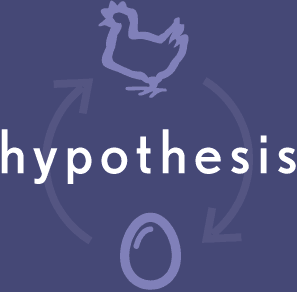Chapter 3. Planning the project
There are two barriers to good planning. The first is prevailing paradigms, and the second is the nature of human beings.
A paradigm is a belief about what the world is like. You can tell what people believe by watching what they do, because they always behave consistently with their deeply held beliefs.
The second reason that people don’t plan is that they find the activity painful. Some individuals, especially engineers and programmers, are concerned that they will be held to estimates of task durations that they have made using their best guesses.
The word control has two connotations
One meaning of the word is power and domination. In management, this is sometimes called the command-and-control approach, which in its worst form degenerates into the use of fear and intimidation to get things done.
The second meaning of control is highlighted in the extracted quotation.
Control is exercised by comparing where you are to where you are supposed to be so that corrective action can be taken when there is a deviation.
Further note that two things are necessary for control to exist. First, you must have a plan that tells where you are supposed to be in the first place.
Second, if you don’t know where you are, you can’t have control. As the second quotation says, knowing where you are isn’t as easy as it may seem, especially in doing knowledge work.
Planning defined
Planning is quite simply answering the questions shown in Figure 3-2.
Strategy, Tactics, and Logistics
To plan a project properly, you must attend to three kinds of activities that may have to be performed during the life of the job. These are strategy, tactics, and logistics.Strategy refers to the overall method you will employ to do the job, sometimes referred to as a “game plan.”
Too often planners choose a project strategy because “it has always been done that way,” rather than because it is best. You should always ask yourself, “What would be the best way to go about this?” before you proceed to do detailed implementation planning.
Implementation Planning
Once you have decided to build boats upside down, you must work out all of the details of how it will be done.
Logistics
Military people can quickly tell you the benefit of attention to logistics. You can’t fight a battle if people have no ammunition, food, clothing, or transportation. It is logistics that attends to these things.
Plan Ingredients
Following are the minimum ingredients that should be contained in a project plan.
-
Problem statement.
-
Project mission statement (see chapter 3 for instructions on how to develop a mission statement).
-
Project objectives (see chapter 3).
-
Project work requirements, including a list of all deliverables, such as reports, hardware, software, and so on. It is a good idea to have a deliverable at each major project milestone so that progress can be measured more easily.
-
Exit criteria. Each milestone should have criteria established that will be used to determine whether the preceding phase of work is actually finished. If no deliverable is provided at a milestone, then exit criteria become very important.
-
End-item specifications to be met: This means engineering specifications, architectural specs, building codes, government regulations, and so on.
-
Work Breakdown Structure (WBS). This is an identification of all of the tasks that must be performed in order to achieve project objectives. A WBS is also a good graphic portrayal of project scope (see chapter 6).
-
Schedules (both milestone and working schedules should be provided; see chapters 6 and 7).
-
Required resources (people, equipment, materials, and facilities). These must be specified in conjunction with the schedule (see chapters 5 and 6).
-
Control system (see chapters 8 and 9).
-
Major contributors. Use a Linear Responsibility Chart for this (see chapter 5).
- Risk areas with contingencies when possible
Sign-Off of the Plan
A signature means that the individual is committed to his contribution, agrees with the scope of work to be done, and accepts the specs as valid.
The plan should be signed in a project plan review meeting, People should be encouraged to “shoot holes in the plan” during the review meeting, rather than wait until problems develop later on.
Changing the Plan
It would be nice to think that a plan, once developed, would never change. However, that is unrealistic. No one has 20/20 foresight. Unforeseen problems are almost certain to arise. The important thing is to make changes in an orderly way, following a standard change procedure.
-
Changes should be made only when a significant deviation occurs. A significant change is usually specified in terms of percent tolerances relative to the original targets.
-
Change control is necessary to protect everyone from the effects of scope creep—changes to the project that result in additional work.
-
Causes of changes should be documented for reference in planning future projects. The causes should be factual, not blame-and-punishment statements.
Suggestions for Effective Planning
-
Plan to plan. It is always difficult to get people together to develop a plan. This means that an agenda must be prepared, the meeting should be time-limited to the degree possible, and people should be kept on track.
-
The people who must implement a plan should participate in preparing it.
-
The first rule of planning is to be prepared to re-plan. Unexpected obstacles will undoubtedly crop up and must be handled.
-
Because unexpected obstacles will crop up, always conduct a risk analysis to anticipate the most likely ones.
- Develop Plan B just in case Plan A doesn’t work. The simple way to do a risk analysis is to ask, “What could go wrong?” This should be done for the schedule, work performance, and other parts of the project plan.
-
Begin by looking at the purpose of doing whatever is to be done. Develop a problem statement. All actions in an organization should be taken to achieve a result, which is another way of saying “solve a problem.”
- Use the Work Breakdown Structure (discussed in chapter 5) to divide the work into smaller chunks for which you can develop accurate estimates for duration, cost, and resource requirements.
Project Planning Steps
The basic planning steps are as follows. Note that some of these topics are covered in the next chapter.
-
Define the problem to be solved by the project.
-
Develop a mission statement, followed by statements of major objectives.
-
Develop a project strategy that will meet all project objectives.
-
Write a scope statement to define project boundaries (what will and will not be done).
-
Develop a Work Breakdown Structure (WBS).
-
Using the WBS, estimate activity durations, resource requirements, and costs (as appropriate for your environment).
-
Prepare the project master schedule and budget.
-
Decide on the project organization structure—whether matrix or hierarchical (if you are free to choose).
-
Set up the project notebook.
- Get the plan signed off by all project stakeholders.
Key Points to Remember
If you have no plan, you have no control.
-
The people who must execute a plan should participate in preparing it.
-
Have the plan signed off in a meeting, not by sending it through the interoffice mail.
-
Keep all project documentation in a project notebook.
-
Use exit criteria to determine when a milestone has actually been achieved.
-
Require that changes to the project plan be approved before making them.
-
Risk management should be part of all project planning.
-
A paradigm is a belief about what the world is like.
-
Planning is answering the “who, what, when, and how” questions.
-
Logistics refers to supplying people with materials and supplies they need to do their jobs.









































